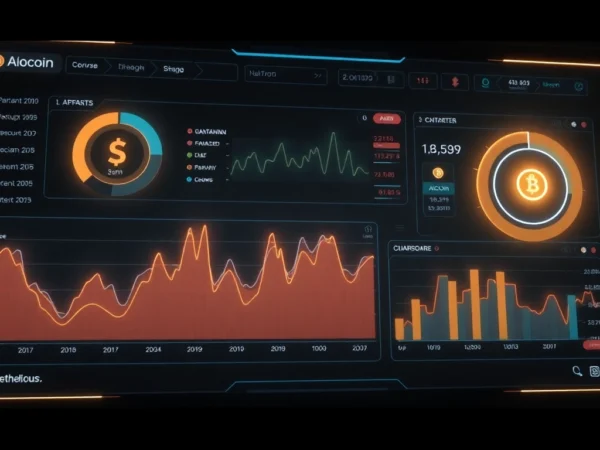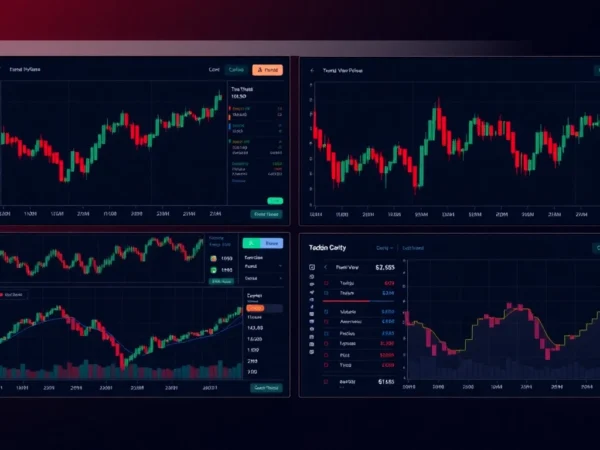Comprehensive Guide to Cryptocurrency Investing and Market Trends in 2024
Understanding Cryptocurrency Fundamentals
Cryptocurrency has evolved into a transformative financial technology, redefining how we perceive and utilize digital assets. At its core, cryptocurrency is a digital or virtual form of currency that relies on cryptographic principles for secure transactions and validation within a decentralized network. Unlike traditional fiat currencies issued by governments, cryptocurrencies operate on blockchain technology—distributed ledgers maintained by a network of computers, or nodes, which ensure transparency, immutability, and resistance to censorship.
What is Cryptocurrency and How It Works
Cryptocurrencies are created through a process called mining, where participants solve complex cryptographic puzzles to validate and record transactions on the blockchain. These digital assets are stored in digital wallets—applications or hardware devices—that facilitate sending and receiving funds. Bitcoin, the pioneer of cryptocurrencies, introduced the concept of a decentralized peer-to-peer currency system, eliminating the need for intermediaries such as banks.
The consensus mechanisms—like Proof of Work (PoW) and Proof of Stake (PoS)—play crucial roles in maintaining network security and integrity. Transactions are verified by network participants, and once validated, they are permanently recorded, making fraud and double-spending virtually impossible.
The Evolution of Digital Currency Technologies
From Bitcoin’s inception in 2009, cryptocurrency technology has expanded exponentially. Innovations such as Ethereum introduced smart contracts—self-executing contracts with coded rules—enabling decentralized applications (dApps) and other Web3 functionalities. Over time, alternative protocols like RGB for stablecoin integration, Layer 2 scaling solutions, and interoperability frameworks have advanced the ecosystem’s scalability and usability. These innovations have responded to challenges like high transaction fees, slow confirmation times, and cross-chain compatibility, fueling broader adoption.
Key Features of Today’s Cryptocurrency Ecosystem
The modern cryptocurrency landscape is characterized by features including:
- Decentralization: No single entity controls the network, enhancing resilience and censorship resistance.
- Transparency: Transactions are publicly recorded on the blockchain, facilitating auditability and trust.
- Security: Cryptographic protocols protect user assets and transaction integrity.
- Programability: Smart contracts enable complex, automated processes onboard blockchain platforms.
- Tokenization: Assets, from real estate to equities, are increasingly represented as digital tokens, expanding investment opportunities.
This ecosystem continues to evolve, integrating with traditional financial infrastructures and emerging innovations, shaping a financial paradigm shift.
Current Trends and Insights in Cryptocurrency Markets
Market Performance and Price Movements
The global crypto market cap stands at approximately $3.76 trillion, reflecting over a 3% decrease in recent days but still demonstrating substantial market capitalization relative to traditional assets. Major cryptocurrencies such as Bitcoin and Ethereum continue to sway market sentiment, influenced by macroeconomic factors, institutional participation, and technological advancements. Recent events, including significant institutional buys—like the $11.7 million Bitcoin purchase by Metaplanet—and notable corporate strategies such as South Korea’s Bitplanet acquiring $40 million in Bitcoin, underline an increasing institutional foothold.
Major Players and Institutional Adoption
Institutional entities are increasingly embracing cryptocurrencies as part of diversified portfolios. Companies like Amdax, a Dutch firm raising over $23 million to launch Bitcoin treasury services, exemplify this trend. Additionally, the launch of crypto-native neobanks across Europe and proposals from Philippine lawmakers to embed blockchain into government budgets signal growing institutional acceptance. Regulatory activities, both restrictive and progressive, also influence market dynamics, creating opportunities and challenges for investors.
Emerging Altcoins and Web3 Developments
Beyond Bitcoin and Ethereum, altcoins such as Solana (SOL), Binance Coin (BNB), and newly tokenized institutional funds are gaining momentum. These projects often focus on scalability, interoperability, and specialized use cases within Web3, such as NFTs, decentralized finance (DeFi), and digital identity solutions. The Ethereum foundation’s renewed emphasis on interoperability as a top UX goal illustrates efforts to unify fragmented chains, fostering broader application development.
Strategies for Investing in Cryptocurrency
Risk Management and Security Best Practices
Given the volatility and evolving regulatory landscape, secure investing requires robust risk management strategies. Utilizing hardware wallets, employing multi-signature security, and staying updated on scams and malware (such as the recent crackdown on hacking syndicates in South Korea) are essential steps. Diversifying across assets like Bitcoin, altcoins, and tokenized funds can mitigate risks. Additionally, engaging with reputable exchanges, enabling two-factor authentication, and conducting thorough due diligence reduce vulnerabilities.
Portfolio Diversification and Asset Allocation
Modern investment approaches suggest allocating a significant portion to established assets like Bitcoin, often viewed as a digital gold, while diversifying into promising altcoins and tokenized securities. Emerging sectors such as DeFi, stablecoins like Tether’s RGB integration, and institutional funds increasingly offer attractive risk-return profiles. For example, tokenized institutional alternative funds surged by 47%, indicating an expanding space for diversification.
Long-term vs. Short-term Investment Approaches
Long-term investors focus on fundamental value, potential for mainstream adoption, and technological innovation. They often HODL through volatility and look for macro trends like the upcoming altseason—predicted as ETH, SOL, and BNB prepare for explosive growth. Conversely, short-term traders capitalize on market volatility, arbitrage opportunities, and event-driven moves, such as regulatory announcements or large institutional trades.
Regulatory Environment and Future Outlook
Global Regulatory Trends and Compliance
Regulatory landscapes vary widely, with countries like South Korea imposing strict crackdowns on hacking syndicates and illegal trading, while others like Europe are pioneering crypto-native banking and stablecoin frameworks. A notable development is the Philippine senator’s proposal to embed blockchain in national budgeting, reflecting governmental recognition of crypto’s strategic importance. Global standards for AML/KYC and tax compliance continue to evolve, influencing exchange operations and institutional participation.
Impact of Blockchain Innovation on Financial Systems
Innovations like the Ethereum foundation’s interoperability initiatives and companies adopting frameworks such as XRPFi are reshaping underlying financial infrastructures. The potential rise of on-chain capital markets and the emergence of crypto-based insurance markets address some of the historical pain points like liquidity and risk management. These developments hint at a future where blockchain technology seamlessly integrates into traditional finance, offering efficiency, transparency, and new product offerings.
What’s Next for Cryptocurrency in 2024 and Beyond
Experts predict that the ongoing altseason and increased institutional engagement will propel the cryptocurrency sector forward. Projects focusing on scalability, interoperability, and compliance will dominate innovation. Additionally, the rise of digital assets like tokenized securities and digital twins, along with regulatory clarity, will foster mainstream adoption. The expansion of Web3, DeFi, and the integration of AI-driven platforms will further embed crypto in everyday transactions and global finance.
Practical Tools and Resources for Crypto Enthusiasts
Top Exchanges, Wallets, and Trading Platforms
Leading exchanges such as Coinbase, Binance, and Kraken provide liquidity and security for traders and investors. Hardware wallets like Ledger and Trezor ensure safe storage of private keys, while DeFi platforms like Uniswap and Aave offer alternative investment avenues. Institutional tools such as Hex Trust and partnerships with core infrastructure providers enable access to staking, yield farming, and custody services tailored to high-net-worth individuals.
Educational Resources and Community Insights
Staying informed is crucial in the volatile crypto landscape. Resources include CoinMarketCap’s market analysis, Reddit communities, and reputable blogs providing insights into scams, regulatory updates, and emerging technologies. Platforms like Web3 Foundation and Theoramind are pioneers in educational content and developer support, facilitating a knowledgeable user base.
Emerging Technologies & DeFi Protocols
The rapid evolution of DeFi protocols, including liquidity pools, yield aggregators, and on-chain capital markets, signals a shift towards a more decentralized and efficient financial system. Innovations like Filecoin’s NLP AI agents for Web3, and collaborations like Blackshark.ai’s digital twin projects in UAE, demonstrate how blockchain is intersecting with AI and metaverse developments to create new economic paradigms.










